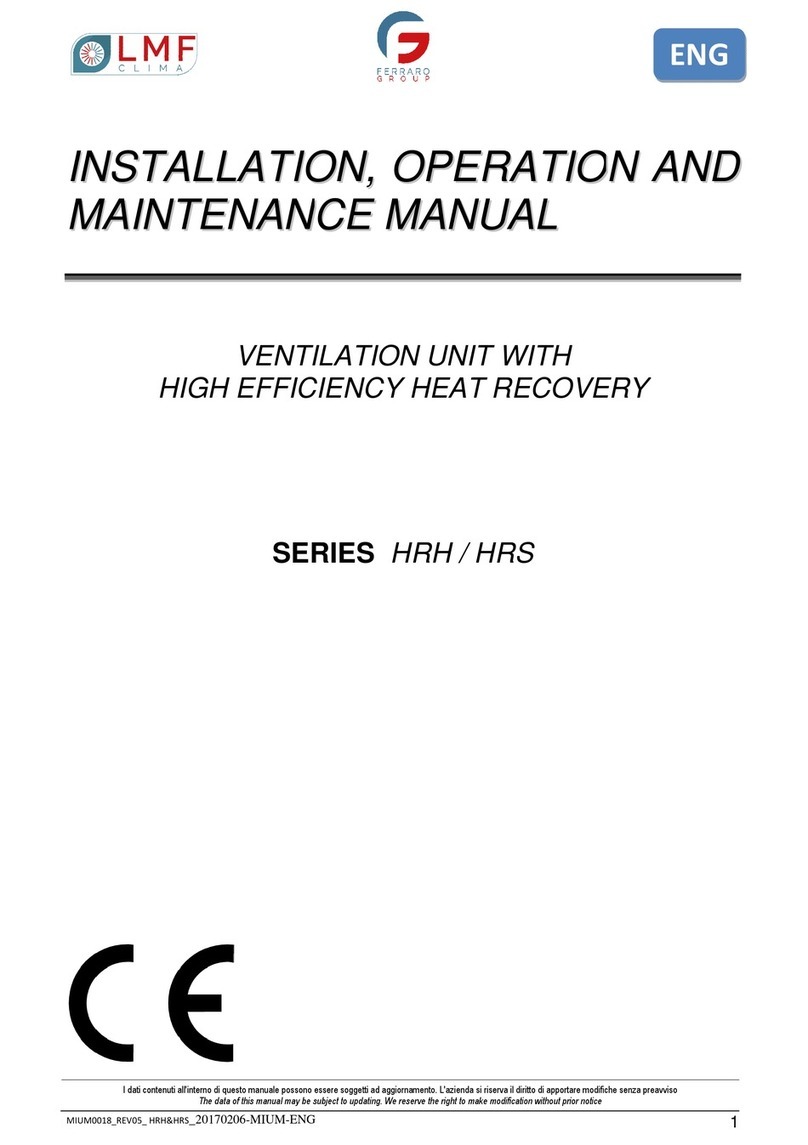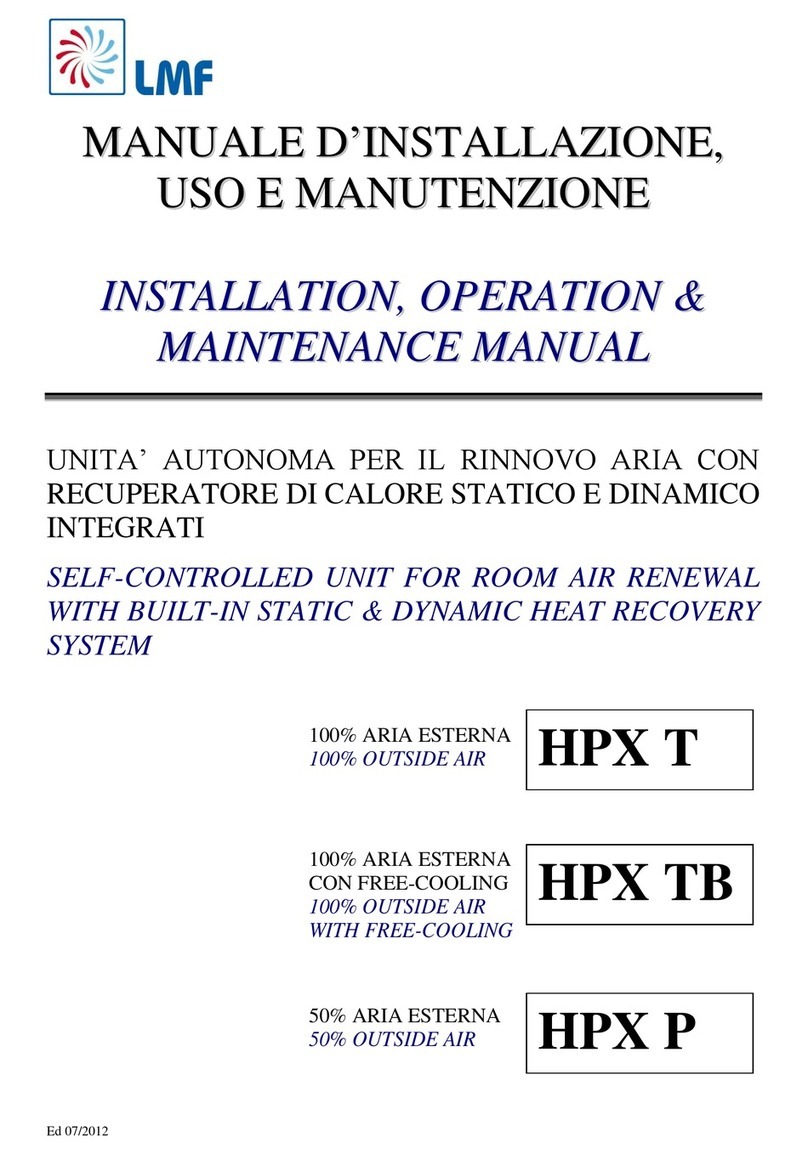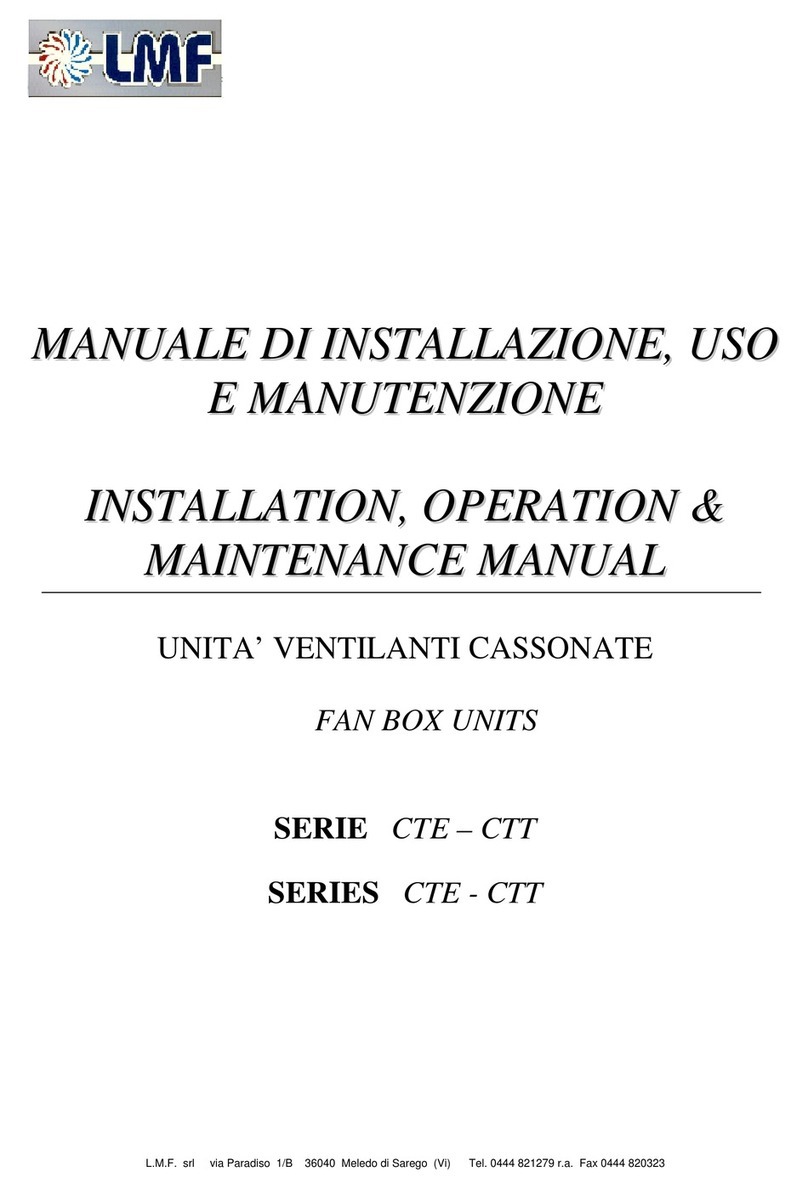
INSTALLATION &MAINTENANCE MANUAL PAGE 6
Ed. 06/2005
SEZIONE 1–PRESENTAZIONE
1.1. Presentazione manuale pag.7
1.2. Identificazione macchina pag.7
SEZIONE 2–CARATTERISTICHE TECNICHE
2.1. Caratteristiche generali pag.8
2.2. Accessori pag.8
2.3. Dimensioni unità pag.9
2.4. Caratteristiche elettriche pag.9
SEZIONE 3–TRASPORTO
3.1. Imballaggio pag.10
3.2. Movimentazione e trasporto pag.10
3.3. Controllo al ricevimento pag.10
3.4. Stoccaggio pag.10
SEZIONE 4–INSTALLAZIONE E MESSA IN
SERVIZIO
4.1. Definizioni pag.11
4.2. Norme di sicurezza pag.11
4.3. Operazioni preliminari pag.12
4.4. Scelta del luogo d’installazione pag.12
4.5. Collegamento ai canali pag.13
4.6. Collegamenti elettrici pag.13
4.7. Installazione accessori ( RCS, VT ) pag.14
SEZIONE 5–SCHEMI ELETTRICI
5.1. Quadro macchine pag.16
5.2. Collegamento SIL monofase con
regolatore di velocità RCS pag.17
5.3. Collegamento SIL trifase con
autotrasformatore VT pag.18
SEZIONE 6–CONTROLLI PRIMA
DELL’AVVIAMENTO
6.1. Controlli prima dell’avviamento pag.19
SEZIONE 7–MANUTENZIONE ORDINARIA
7.1. Controlli mensili pag.19
7.2. Controlli annuali pag.20
SEZIONE 8–LOCALIZZAZIONE DEI GUASTI
8.1. Localizzazione dei guasti pag.21
SEZIONE 9–SMANTELLAMENTO
9.1. Smantellamento pag.21
SECTION 1–PRESENTATION
1.1. Manual presentation page7
1.2. Unit identification page7
SECTION 2–TECHNICAL CHARACTERISTICS
2.1. General characteristics page8
2.2. Accessories page8
2.3. Unit dimensions page9
2.4. Electrical characteristics page9
SECTION 3–TRANSPORTATION
3.1. Packing page10
3.2. Transportation page10
3.3. Checklist page10
3.4. Storing page10
SECTION 4–INSTALLATION &CONNECTION
4.1. Definitions page 11
4.2. Safety regulations page 11
4.3. Preliminary operations page 12
4.4. Choosing installation position page 12
4.5. Duct connection page 13
4.6. Electrical connection page 13
4.7. Accessories connection ( RCS, VT ) page 14
SECTION 5–ELECTRICAL SCHEMES
5.1. Machine cabinet page 16
5.2. SIL single-phase connection to RCS speed
regulator page 17
5.3. SIL three-phase connection to VT auto
transformer page 18
SECTION 6–PRE-START-UP CHECKS
6.1. Pre-start-up checks page 19
SECTION 7–ORDINARY MAINTENANCE
7.1. Monthly maintenance page 19
7.2. Yearly maintenance page 20
SECTION 8–TROUBLESHOOTING
8.1. Fault finding page 21
SECTION 9–SCRAPPING
9.1. Scrapping page 21






























